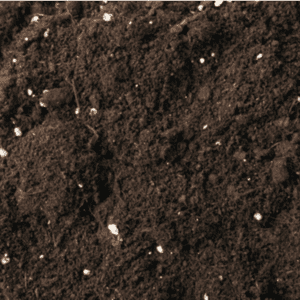Warm weather is fast approaching. If you’ve got flower beds on your property, or are thinking about planting them, now’s the time to consider which kind of topsoil is best. There are many options to choose from, and each of them has its pros and cons, depending on what your garden goals are. Today, we’ll take a look at the different types of garden soil so you can prepare for the upcoming season.
Summary Points
ToggleGarden Soil 101
The first thing to know about garden soils is that they can be mixed and matched as you see fit. You can buy them premixed or purchase specific types and blend them.
Here are the most common types:
- Sulfur – Helps lower your soil’s pH level by reducing the alkalinity and boosts iron levels.
- Lime – Increases the pH level and corrects overly acidic soil.
- Perlite – Lightweight crushed rock made from volcanic activity; ideal for soil that needs airflow and good drainage.
- Compost – Animal manure from agriculture is repurposed and added to these soil mixes to add nutrients to your soil.
- Peat moss – helps soil retain moisture and nutrients while also improving drainage; can absorb 10 to 20 times its weight in water.
How To Tell Which Soil Is Right
This really depends on each plant’s individual needs. Grouping plants with similar growing conditions will make things easier for you. For instance, if you have several plants that all require well-drained soil, consider planting them in a cluster so you can spread perlite soil over the entire area. Make sure always to read the plant tags and labels to figure out what’s best for your flowers. Another good tip is to perform a soil test. This will give you the exact pH level of your soil and tell you what nutrients your soil is craving.
Topsoil vs. Garden Soil
These words may be used interchangeably, but there is a key difference. Like beef, topsoil comes in different grades, and both are meant to be added to the existing ground soil. Lower-grade topsoil is intended for filling in and leveling holes. Higher-quality topsoil is ideal for adding new organic matter to the existing soil. However, topsoil on its own should not be used for planting. You must blend it with garden soil to provide adequate nutrients to your plants. Topsoil provides the structure that will keep the garden bed leveled, while garden soil provides plants with food.
Garden soil consists of pre-mixed blends of fertilizer and organic matter. It’s meant to be mixed with your existing native soil and address issues like imbalanced pH levels and poor nutrient  levels. It would be best if you only used this for planting in-ground, however. If you’re planning on doing a vegetable garden in boxes, be sure to look for raised bed garden soil.
levels. It would be best if you only used this for planting in-ground, however. If you’re planning on doing a vegetable garden in boxes, be sure to look for raised bed garden soil.
Potting soil is good for, well, potted plants. They are formulated to allow for drainage as well as giving the plant roots room to expand. Flowers especially like organic garden soil, so keep that in mind when purchasing this year’s soil.
Keep Your Soil In Peak Condition
You might think once the soil’s laid down, you can forget about it, but there are several things to keep in mind regarding your soil’s health.
Grubs
Some grub activity beneath the surface is expected, but if your garden beds or lawn have an overabundance of grubs, you’ll notice dead or dying patches of grass and plants. Keeping grubs out of your soil with a good grub treatment sets your garden up for success in the long run.
Loosen Compacted Soil
If your lawn or garden bed feels hard when you walk on it, and garden tools can’t easily penetrate the earth, you likely have compacted soil. This doesn’t mean you’re a bad gardener! The soil will compact over time due to thatch build-up and other factors. Having a core aeration treatment can swiftly remedy the problem.
Additional Fertilization
Lawns are tough, but they need some help from time to time. If your lawn looks a bit shabby, the soil might need some nutrients. Consider having a lawn care professional apply a fertilization treatment. It’ll get your lawn looking lush and green in no time – and you won’t have to do the hard work yourself!
Give Your Garden The Best Care Possible – Call Top Lawn
Before you add that topsoil to your garden beds, call the experts at Top Lawn. Our core aeration will ensure your existing soil is loosened and receptive to nutrients. Our grub control ensures beetle larvae don’t eat up your newly planted flowers. And our lawn fertilization gets your soil back on track, so your grass looks lush and green. Give us a call today at (248) 956-6022 or contact us here to schedule a treatment. For more tips on lawn care, trees, and pest control, be sure to check out our blog and like us on Facebook, Twitter, Pinterest, and Instagram.





